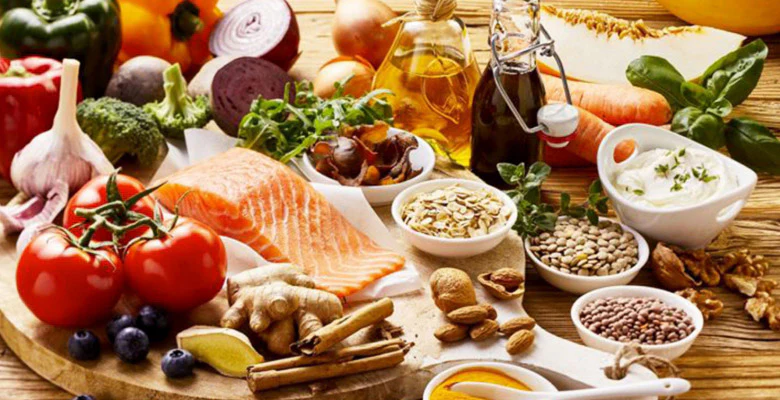Joint pain, a prevalent concern that can significantly impact our daily lives, often stems from inflammation within the intricate structures of our joints. While medical treatments are essential for managing chronic joint conditions, the food we choose to consume can serve as a powerful and natural ally in reducing inflammation and alleviating discomfort. The realm of nutrition offers a diverse and flavorful array of ingredients brimming with compounds that possess anti-inflammatory properties and contribute to the overall health and well-being of our joints. Let’s embark on a culinary journey to explore some of the most beneficial foods you can incorporate into your daily meals to support joint health and potentially lessen the burden of pain.
It’s essential to approach dietary changes as a complementary strategy that works in concert with medical advice and other healthy lifestyle practices. Consistently including these nutrient-dense foods in a well-balanced dietary pattern can contribute to long-term joint health and may play a significant role in managing the severity of joint pain, promoting greater comfort and mobility.
1. Fatty Fish: Rich in Omega-3 Fatty Acids for Joint Comfort
Oily fish like salmon, mackerel, sardines, and trout are excellent sources of omega-3 fatty acids, particularly EPA (eicosapentaenoic acid) and DHA (docosahexaenoic acid). These essential fats are celebrated for their potent anti-inflammatory effects, which can aid in reducing swelling and alleviating pain within the joints. Aim to include fatty fish in your diet at least twice a week through grilling, baking, or steaming.
2. Berries: Antioxidant Powerhouses for Joint Health
Berries, including blueberries, strawberries, raspberries, and blackberries, are vibrant and delicious sources of potent antioxidants, especially anthocyanins, the pigments responsible for their rich colors. Anthocyanins possess significant anti-inflammatory properties and can help protect the body against the damaging effects of free radicals, which contribute to inflammation within the joints. Enjoy a variety of berries as nutritious snacks or additions to meals like yogurt and oatmeal. Cherries, particularly tart cherries, have also shown promise in reducing joint pain and the frequency of gout attacks.
3. Extra Virgin Olive Oil: A Source of Healthy Fats and Oleocanthal for Joint Support
High-quality extra virgin olive oil is rich in monounsaturated fats and contains oleocanthal, a natural compound with anti-inflammatory effects similar to some pain relievers. Use extra virgin olive oil in salad dressings and for light cooking to potentially benefit from its joint-soothing properties.
4. Turmeric: The Golden Spice with Curcumin for Inflammation Management
Turmeric, a vibrant yellow spice integral to many curry dishes, owes its potential joint-alleviating properties to curcumin, a potent antioxidant and anti-inflammatory compound. Studies suggest that curcumin can assist in reducing joint pain and stiffness by modulating inflammatory pathways within the body. To optimize its absorption, consider pairing turmeric with black pepper, which contains piperine, and consuming it with healthy fats.
5. Ginger: Natural Anti-Inflammatory Properties for Joint Relief
Ginger, a root with a warm and spicy flavor, contains natural anti-inflammatory compounds called gingerols. Research has shown that ginger can help reduce pain and improve function in individuals with osteoarthritis and rheumatoid arthritis. Incorporate fresh ginger into teas, soups, and stir-fries to potentially unlock its remarkable joint-soothing benefits.
6. Nuts and Seeds: Healthy Fats and Essential Nutrients for Joint Support
Nuts and seeds, including almonds, walnuts, chia seeds, and flaxseeds, are good sources of healthy fats, fiber, vitamin E, and magnesium, all of which can contribute to reducing inflammation and supporting joint health. Walnuts and flaxseeds also contain omega-3 fatty acids. Enjoy them as snacks or add them to your meals for added texture and nutritional value.
7. Leafy Green Vegetables: Nutrient-Rich Allies for Joint Well-being
Dark leafy greens like spinach, kale, and collard greens are rich in vitamins, minerals, and antioxidants, including vitamin K, which is important for bone health. They also contain compounds that may help reduce inflammation throughout the body. Incorporate a variety of leafy greens into your daily diet.
8. Broccoli and Cruciferous Vegetables: Sulforaphane for Potential Cartilage Protection
Broccoli and other cruciferous vegetables like cauliflower and Brussels sprouts contain sulforaphane, a compound that has shown anti-inflammatory effects and may help protect cartilage, the cushioning tissue in joints. Include these vegetables in your meals through steaming, roasting, or stir-frying.
9. Garlic and Onions: Flavorful Inflammation Fighters for Joint Health
Garlic and onions contain sulfur compounds that have demonstrated anti-inflammatory effects and may help alleviate some forms of joint pain. Incorporate them generously into your cooking for both flavor enhancement and potential health benefits for your joints.
10. Whole Grains: Fiber for Reduced Inflammation and Overall Health
Whole grains like oats, brown rice, and quinoa are high in fiber, which can help lower inflammatory markers in the body. Opting for whole grain alternatives over refined grains can contribute to overall health and potentially aid in managing joint pain.
Incorporating these foods into a well-balanced dietary pattern can be a delicious and proactive way to support your joint health and potentially reduce pain. Remember to consult with your healthcare provider for personalized advice and to discuss any significant dietary changes.
